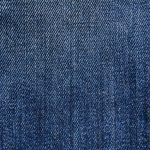When choosing microfiber towels for your car, you’ll want polyamide for softness and gentle cleaning, as it’s less likely to scratch delicate surfaces. Polyester adds durability and dries faster, making towels last longer and handle tough jobs. A blend of both fibers gives you the best balance of absorbency, softness, and resilience, perfect for varied car care needs. Keep going to discover which towel types suit different cleaning tasks and budgets.
Table of Contents
Key Takeaways
- Polyamide fibers are softer and ideal for delicate surfaces, minimizing scratches during polishing or light cleaning tasks.
- Polyester fibers offer greater durability and chemical resistance, making them suitable for heavy-duty cleaning and frequent washing.
- Towels with higher polyamide content absorb water faster, enhancing drying efficiency on wet vehicle surfaces.
- Polyester towels dry quicker after use and maintain their structure longer, supporting longevity with proper care.
- Blended microfiber towels (e.g., 70% polyester, 30% polyamide) balance softness, absorbency, durability, and cost-effectiveness for versatile car care.
Understanding the Composition of Polyamide and Polyester Microfiber
When you choose a car microfiber towel, understanding the materials—polyamide and polyester—helps you pick the right one.
Polyamide, also known as nylon, is a synthetic fiber known for its softness and strength. It’s great for delicate surfaces because it has a smooth texture that won’t scratch your car’s paint.
Polyamide, or nylon, offers softness and strength, perfect for protecting delicate car surfaces from scratches.
Polyester, on the other hand, is more durable and resistant to chemicals. It provides excellent abrasion resistance, making it ideal for tougher cleaning tasks.
Most microfiber towels combine these two fibers, typically in a 70% polyester and 30% polyamide ratio, to balance durability and softness.
Knowing this composition allows you to select a towel that fits your specific car care needs, whether you want gentle polishing or heavy-duty cleaning.
Absorbency and Drying Efficiency Comparison
Beyond their material makeup, how polyamide and polyester perform in absorbency and drying efficiency plays a big role in their effectiveness as car microfiber towels.
You’ll find polyamide fibers excel at absorbing water quickly due to their hydrophilic nature, making them great for drying wet surfaces fast.
Polyester fibers, while less absorbent, still wick moisture effectively and dry quicker after use.
If you prioritize soaking up spills or water from your car’s surface, polyamide-rich towels will serve you better.
However, if you want towels that dry rapidly between uses to prevent mildew or odor, polyester-heavy options have an edge.
Choosing the right blend depends on whether you value maximum water absorption or faster drying times during your car detailing routine.
Durability and Longevity in Car Care Applications
Although both polyamide and polyester microfiber towels offer excellent cleaning performance, their durability and longevity differ greatly in car care applications.
You’ll find polyester towels tend to withstand repeated washing and heavy use better, maintaining their structure and effectiveness over time.
Polyamide fibers, while soft and absorbent, may degrade faster with frequent exposure to chemicals and high-temperature washes.
If you want towels that last through countless detailing sessions without fraying or losing integrity, polyester is often the smarter choice.
However, you should still follow proper care instructions regardless of material to maximize lifespan.
Softness and Scratch Resistance for Vehicle Surfaces
Since your vehicle’s paint demands gentle care, choosing towels with the right softness and scratch resistance is essential. Polyamide fibers tend to be softer and more pliable, making them less likely to cause micro-scratches during washing or drying. Polyester fibers, while durable, might feel slightly rougher, increasing the risk of surface abrasion if not used carefully.
When selecting microfiber towels, focus on qualities that protect your car’s finish without sacrificing cleaning efficiency.
Key factors to take into account include:
- Fiber composition and blend ratio
- Pile density and thickness
- Weave type and texture
- Edge finishing to prevent lint or snagging
- Intended use, like drying, polishing, or waxing
Choosing towels that balance softness with strength helps maintain your vehicle’s pristine appearance safely.
Cost and Availability Considerations for Microfiber Towels
When shopping for microfiber towels, you’ll notice that price and availability vary widely depending on the fiber type and quality.
Polyamide towels tend to be pricier because their softness and absorbency require more complex manufacturing. You might find fewer options in local stores, but online retailers offer a broader selection.
Polyester towels are generally more affordable and easier to find, making them a practical choice if you’re on a budget or need bulk quantities. However, cheaper polyester towels may sacrifice some performance.
If you want the best balance, consider blends; these often combine cost-effectiveness with good quality. Ultimately, your choice depends on how much you’re willing to spend and how accessible the towels are in your area.
Frequently Asked Questions
Can Microfiber Towels Be Safely Washed With Regular Laundry Detergent?
You can wash microfiber towels with regular detergent, but avoid fabric softeners and bleach since they damage fibers. Use a gentle cycle with cold or warm water to keep towels effective and extend their lifespan.
How Environmentally Friendly Are Polyamide and Polyester Microfibers?
You might think all microfibers harm the environment equally, but polyamide and polyester both shed tiny plastic fibers when washed. To reduce impact, you should wash them gently and use filters, helping protect aquatic life.
Do Polyamide or Polyester Towels Retain Odors After Use?
You’ll find polyamide towels tend to hold odors more after use, while polyester towels resist smells better. Regular washing helps, but if you want fresher towels, polyester usually keeps odors at bay longer.
Are There Any Health Risks Associated With Microfiber Dust During Cleaning?
When it comes to microfiber dust, it’s not all sunshine and roses—you might experience irritation or respiratory issues if you breathe it in often. So, wear a mask and work in a well-ventilated spot to stay safe.
Can These Microfiber Towels Be Used Effectively on Glass Surfaces?
Yes, you can use microfiber towels effectively on glass surfaces. They won’t leave streaks or lint, and they gently remove dirt and smudges. Just make sure the towel is clean and slightly damp for best results.
- What Kind Of Material Is Polyamide - July 1, 2025
- What Kind Of Fabric Is Polyamide - July 1, 2025
- What Is Polyamide Plastic - July 1, 2025







